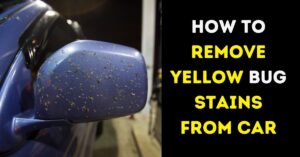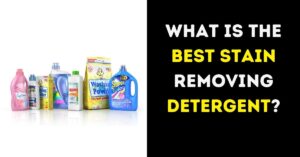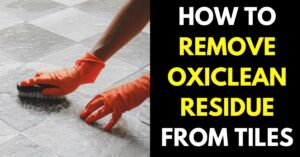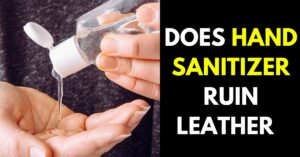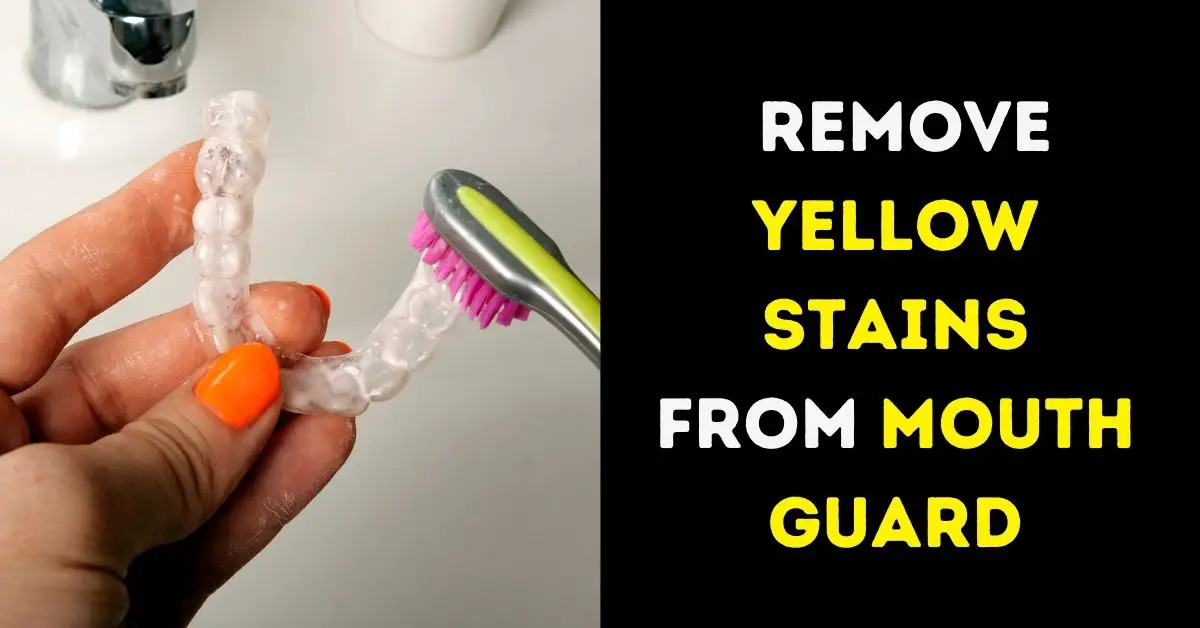
Maintaining proper oral hygiene is essential for your overall health, and part of this regimen often involves using a mouth guard for various reasons, such as protecting your teeth during sports or managing bruxism (teeth grinding).
However, you may notice that your mouthguard develops unsightly yellow stains over time. These stains not only affect the appearance of your mouth guard but can also harbor harmful bacteria if left unaddressed.
In this post, we will walk you through effectively removing those stubborn yellow stains from your mouthguard so that your mouthguard remains clean, fresh, and free from discoloration.
Why Does The Mouthguard Turn Yellow?
The yellowing of your mouthguard is typically a sign that proper cleaning and maintenance may not be occurring as it should. This discoloration often results from the accumulation of saliva and other oral residues on the mouthguard’s surface over time. While this phenomenon is relatively common, it’s not conducive to maintaining good oral health.
Here’s why your mouthguard might be turning yellow:
1. Saliva and Bacteria
Saliva contains natural enzymes and bacteria. When saliva is allowed to sit on the mouthguard without proper cleaning, these microorganisms can proliferate. Over time, they can break down proteins and other organic substances in the saliva, leading to discoloration.
2. Food and Drinks
If you consume colored foods or drinks while wearing your mouthguard, particles from these substances can adhere to the mouthguard’s surface. The pigments in certain foods and beverages, such as coffee or tomato sauce, can contribute to staining.
3. Lack of Cleaning
Failure to clean your mouthguard regularly and thoroughly allows these stains and bacterial growth to persist. Without proper maintenance, the yellowing effect becomes more pronounced.
4. Microbial Growth
Bacteria and fungi can thrive in the warm, moist environment of a mouthguard. Their metabolic processes can produce pigments or compounds that contribute to the yellow discoloration.
Step-by-Step Guide To Remove Yellow Stains from Mouth Guard
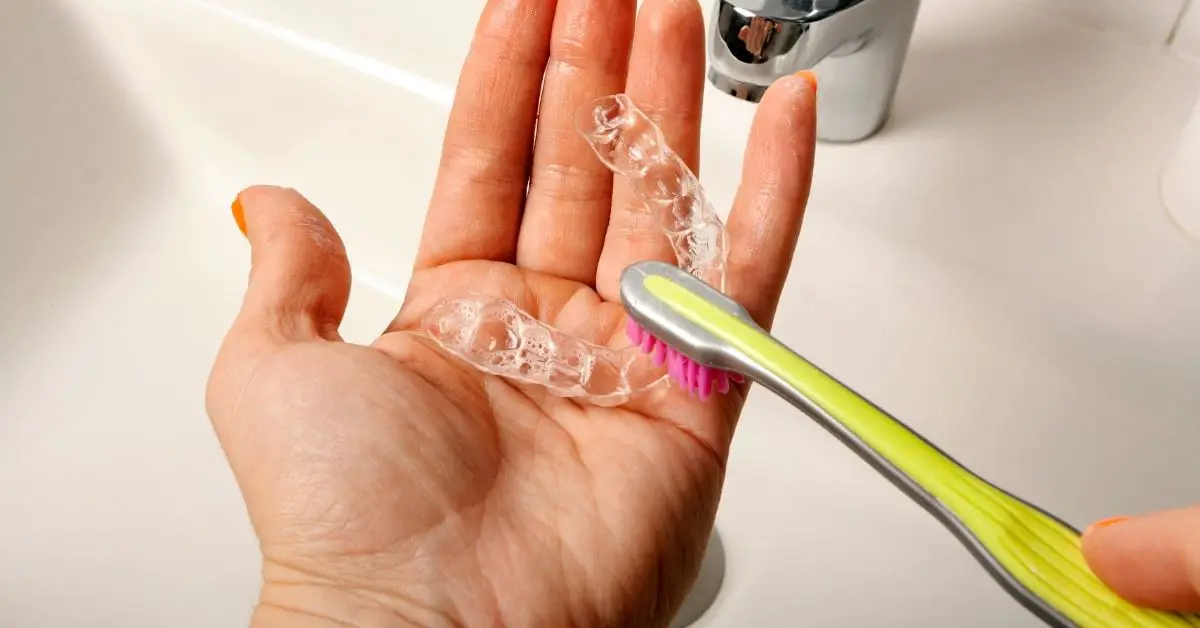
1. Prepare Your Workspace
Find a clean, well-lit area to work in, preferably near a sink for easy access to water. Lay down a clean towel or paper towel on the workspace to ensure cleanliness and prevent contamination during cleaning.
2. Rinse Your Mouth Guard
Begin by rinsing your mouth guard thoroughly under cool, running water. This initial rinse helps remove any loose debris, saliva, or surface dirt from the mouth guard. Use your fingers or a soft toothbrush to aid this process, but be careful not to damage the mouth guard.
3. Create a Cleaning Solution
Prepare a cleaning solution by mixing warm water with a mild dish soap. Alternatively, you can use a non-alcoholic, non-abrasive mouthguard cleaner if you have one. Follow the manufacturer’s instructions if you opt for a commercial cleaner. Ensure that the solution is well-mixed and ready for the next steps.
4. Soak Your Mouth Guard
Place your mouth guard in the cleaning solution, ensuring it is completely submerged. Allow it to soak for the recommended duration as per the dish soap or cleaner instructions. Soaking helps to loosen and soften the stains, making them easier to remove in the subsequent steps.
5. Gently Scrubbing the Stains
After the soaking period, carefully remove your mouthguard from the cleaning solution. Gently scrub the stained areas using a soft toothbrush or a dedicated mouthguard cleaning brush.
Pay extra attention to the yellowed spots, but do not use excessive force, as this can damage the mouth guard’s surface.
6. Rinse and Inspect
Once you’ve scrubbed away the stains, rinse your mouth guard thoroughly under rerunning water. Ensure that all traces of soap or cleaning solution are removed.
Take a moment to inspect your mouthguard, checking for any remaining yellow stains. If stains persist, you may need to repeat the cleaning process.
Can You Use Vinegar To Clean Mouth Guard?
Yes, you can clean a mouth guard with vinegar, but it’s essential as vinegar is acidic and can potentially damage the mouth guard if not used correctly. Here’s a safe way to clean your mouth guard with vinegar
1. Prepare a Vinegar Solution
Mix equal parts of white vinegar and water in a container. For example, you can use 1/2 cup of vinegar and 1/2 cup of water.
2. Submerge Your Mouth Guard
Place your mouth guard in the vinegar solution, ensuring it is fully submerged.
3. Soak for a Short Time
Let the mouth guard soak for about 15-20 minutes. Avoid leaving it in the vinegar solution for an extended period, as the acid could affect the mouthguard material.
4. Rinse Thoroughly
After soaking, remove the mouth guard and rinse it thoroughly under running water. Ensure that all traces of vinegar are washed away.
5. Dry Properly
Allow your mouth guard to air dry completely before storing it. Make sure it’s dry to prevent bacterial growth.
Can Hydrogen Peroxide Clean The Mouthguard?
Yes, you can use hydrogen peroxide to clean your mouth guard. Hydrogen peroxide is an effective disinfectant and can help remove stains and bacteria from your mouth guard.
Here’s how to do it safely:
1. Prepare a Hydrogen Peroxide Solution
Use 3% hydrogen peroxide, which is typically available at most drugstores.
Mix equal parts of hydrogen peroxide and water in a container. For example, you can use 1/2 cup of hydrogen peroxide and 1/2 cup of water.
2. Submerge Your Mouth Guard
Place your mouth guard in the hydrogen peroxide solution, ensuring it is fully submerged.
3. Soak for a Short Time
Allow your mouth guard to soak for about 30 minutes. This will help disinfect it and break down stains.
4. Rinse Thoroughly
After soaking, remove the mouth guard and rinse it thoroughly under running water. Ensure that all traces of the hydrogen peroxide solution are washed away.
5. Dry Properly
Let your mouth guard air dry completely before storing it. Ensure it’s completely dry to prevent bacterial growth.
Final Words
Maintaining a clean and stain-free mouth guard is essential for your oral health and overall well-being. Yellow stains on your mouth guard not only look unappealing but can also harbor harmful bacteria.
Regularly cleaning your mouth guard, storing it properly, and avoiding staining substances will not only extend its lifespan but also protect your teeth and gums during sports or sleep.
A clean mouth guard means better oral hygiene, so take the time to keep it in top-notch condition. Your smile and your health will thank you for it.

![Do I Need Soap Or Detergent To Clean Clothes Stains? [Alternatives] 3 Do I Need Soap Or Detergent To Clean Clothes?](https://cleanservant.com/wp-content/uploads/2023/08/Dawn-Dish-Detergent-To-Clean-Car-Leather-Upholstery-1-300x157.jpg)

